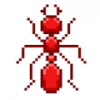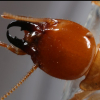Hi!
I recently met up with a friend of mine on this forum (ctantkeeper, he's a great guy). During this meet up, I traded a Bombus impatiens queen for a cute little Reticulitermes colony (three reproductives and nine workers). There seems to be two queens and one male. Most of the workers are at their final molt, with only two showing any age difference. Interestingly, I spotted the classic termite ball fungus growing in the corner of their tube (where the eggs probably were). It's kind of cool to see this harmless little fungus growing in captivity.
I'll do my best to keep this journal updated. Subterranean termites are by far my favorite termites (in fact, my first termites ever were Coptotermes gestroi and Coptotermes formosanus). I hope that I can keep this colony alive.
I'll make sure to post pictures when I get the chance!
Edited by Connectimyrmex, November 27 2017 - 3:34 PM.























